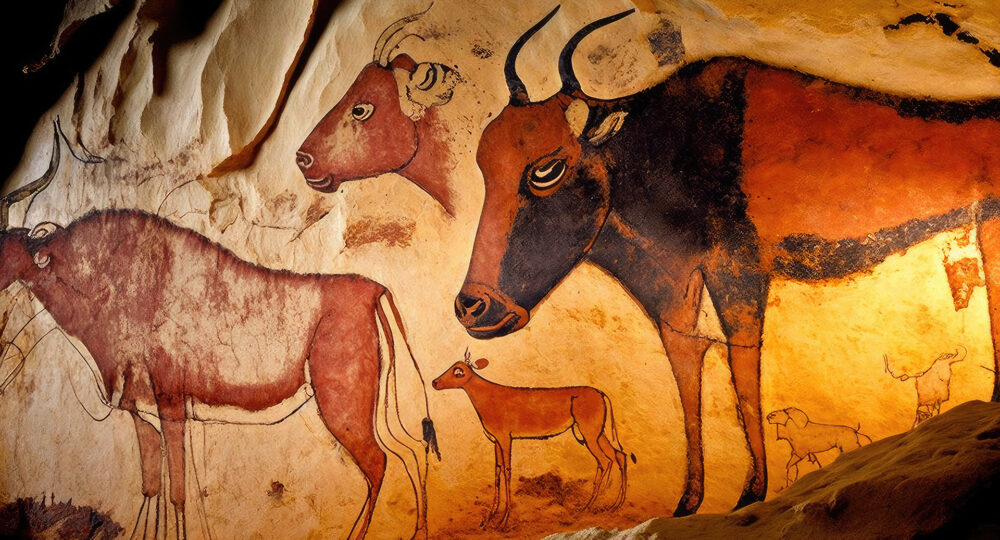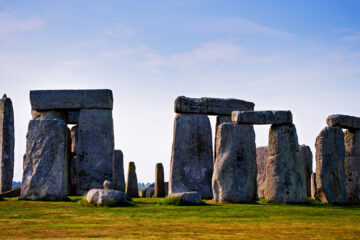
Significance of the Animal Depictions in Prehistoric Cave Paintings
In the shadowed recesses of ancient caves, the legacy of Paleolithic artists endures, offering a window into a world long vanished. In the mysterious prehistoric world, the walls of rocks in the caves served as a canvas for man’s earliest artistic inclinations. These prehistoric galleries, adorned with mammoths, horses, and bison likenesses, transcend mere artistic endeavour; they are a dialogue across millennia, echoing the symbiotic relationship between early humans and the fauna that dominated their world. This exploration illuminates our ancestors’ aesthetic sensibilities and provides invaluable insights into their daily lives, cultural beliefs, and the environment that shaped their existence. As we traverse this ancient artistic landscape, we uncover the intricate narrative woven by those who first mastered the art of storytelling through imagery.
Artistic Mastery and Techniques
The animal representations in prehistoric cave paintings display a remarkable understanding of form and movement. Using pigments derived from natural materials like ochre, charcoal, and hematite demonstrates a sophisticated knowledge of resources. Techniques such as shading, perspective, and overlaying of images reveal an advanced level of artistic skill. These paintings were not mere decorations; they were expressions of a deep observation of the natural world, capturing the essence of each species with surprising accuracy and vitality.
Cultural and Spiritual Significance
Beyond their artistic value, these paintings hold cultural and spiritual significance. They are believed to be more than representations of the surrounding fauna; they were integral to the spiritual and ritualistic practices of these communities. The frequent portrayal of animals like bison, horses, and mammoths suggests a reverence or symbolic importance attached to these creatures. Some theories propose that these paintings were part of shamanistic rituals or hunting magic, intended to ensure a successful hunt or to capture the spirit of the animal.
Insights of Routine Life and Environment
The animal species depicted offer clues to the environment and climate of the time. The presence of large Ice Age mammals like woolly mammoths and rhinoceroses indicates colder climates, while depictions of lions and hyenas suggest a more temperate environment. These paintings also provide evidence of the interaction between humans and animals, whether in the context of hunting, domestication, or coexistence, revealing aspects of the diet, lifestyle, and mobility of prehistoric communities.
Symbolism and Storytelling
Prehistoric cave paintings are early examples of storytelling through art. They depict not only animals but often scenes that suggest narratives, possibly recounting hunting expeditions, migration patterns, or mythological tales. Symbolism, as seen in the abstract signs and patterns accompanying animal figures, points to a complex cognitive and symbolic thought process, marking the development of human communication and expression.
In the dimly lit caverns of our prehistoric past, walls adorned with the images of animals speak volumes about the world of our ancestors. The depiction of animals in these ancient murals showcases early humans’ artistic mastery and provides a profound insight into their lives, beliefs, and environmental interactions.
The animal representations in prehistoric cave paintings are rich in art, culture, and history. They are windows into the souls of our earliest ancestors, providing a glimpse of a world where humans were intimately connected to the rhythms of nature. These ancient murals are not just remnants of a bygone era; they are symbols of humanity’s quest to understand and interpret the world. As we continue to study and marvel at these ancient artworks, we are reminded of the unbroken thread connecting us to our distant past and the universal language of art transcending time and space.









